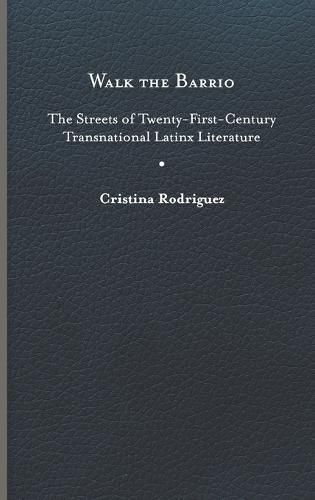Readings Newsletter
Become a Readings Member to make your shopping experience even easier.
Sign in or sign up for free!
You’re not far away from qualifying for FREE standard shipping within Australia
You’ve qualified for FREE standard shipping within Australia
The cart is loading…






Immigrant communities evince particular and deep relationship to place. Building on this self-evident premise, Walk the Barrio adds the less obvious claim that to write about place you must experience place. Thus, in this book about immigrants, writing, and place, Cristina Rodriguez walks neighborhood streets, talks to immigrants, interviews authors, and puts herself physically in the spaces that she seeks to understand.
The word barrio first entered the English lexicon in 1833 and has since become a commonplace not only of American speech but of our literary imagination. Indeed, what draws Rodriguez to the barrios of Los Angeles, New York, Miami, and others is the work of literature that was fueled and inspired by those neighborhoods. Walk the Barrio explores the ways in which authors William Archila, Richard Blanco, Angie Cruz, Junot Di az, Salvador Plascencia, He ctor Tobar, and Helena Mari a Viramontes use their U.S. hometowns as both setting and stylistic inspiration.
Asking how these writers innovate upon or break the rules of genre to render in words an embodied experience of the barrio, Rodriguez considers, for example, how the spatial map of New Brunswick impacts the mobility of Di az’s female characters, or how graffiti influences the aesthetics of Viramontes’s novels. By mapping each text’s fictional setting upon the actual spaces it references in what she calls barriographies, Rodriguez reveals connections between place, narrative form, and migrancy.
This first-person, interdisciplinary approach presents an innovative model for literary studies as it sheds important light on the ways in which transnationalism transforms the culture of each Latinx barrio, effecting shifts in gender roles, the construction of the family, definitions of social normativity, and racial, ethnic, national, and linguistic identifications.
$9.00 standard shipping within Australia
FREE standard shipping within Australia for orders over $100.00
Express & International shipping calculated at checkout
Immigrant communities evince particular and deep relationship to place. Building on this self-evident premise, Walk the Barrio adds the less obvious claim that to write about place you must experience place. Thus, in this book about immigrants, writing, and place, Cristina Rodriguez walks neighborhood streets, talks to immigrants, interviews authors, and puts herself physically in the spaces that she seeks to understand.
The word barrio first entered the English lexicon in 1833 and has since become a commonplace not only of American speech but of our literary imagination. Indeed, what draws Rodriguez to the barrios of Los Angeles, New York, Miami, and others is the work of literature that was fueled and inspired by those neighborhoods. Walk the Barrio explores the ways in which authors William Archila, Richard Blanco, Angie Cruz, Junot Di az, Salvador Plascencia, He ctor Tobar, and Helena Mari a Viramontes use their U.S. hometowns as both setting and stylistic inspiration.
Asking how these writers innovate upon or break the rules of genre to render in words an embodied experience of the barrio, Rodriguez considers, for example, how the spatial map of New Brunswick impacts the mobility of Di az’s female characters, or how graffiti influences the aesthetics of Viramontes’s novels. By mapping each text’s fictional setting upon the actual spaces it references in what she calls barriographies, Rodriguez reveals connections between place, narrative form, and migrancy.
This first-person, interdisciplinary approach presents an innovative model for literary studies as it sheds important light on the ways in which transnationalism transforms the culture of each Latinx barrio, effecting shifts in gender roles, the construction of the family, definitions of social normativity, and racial, ethnic, national, and linguistic identifications.